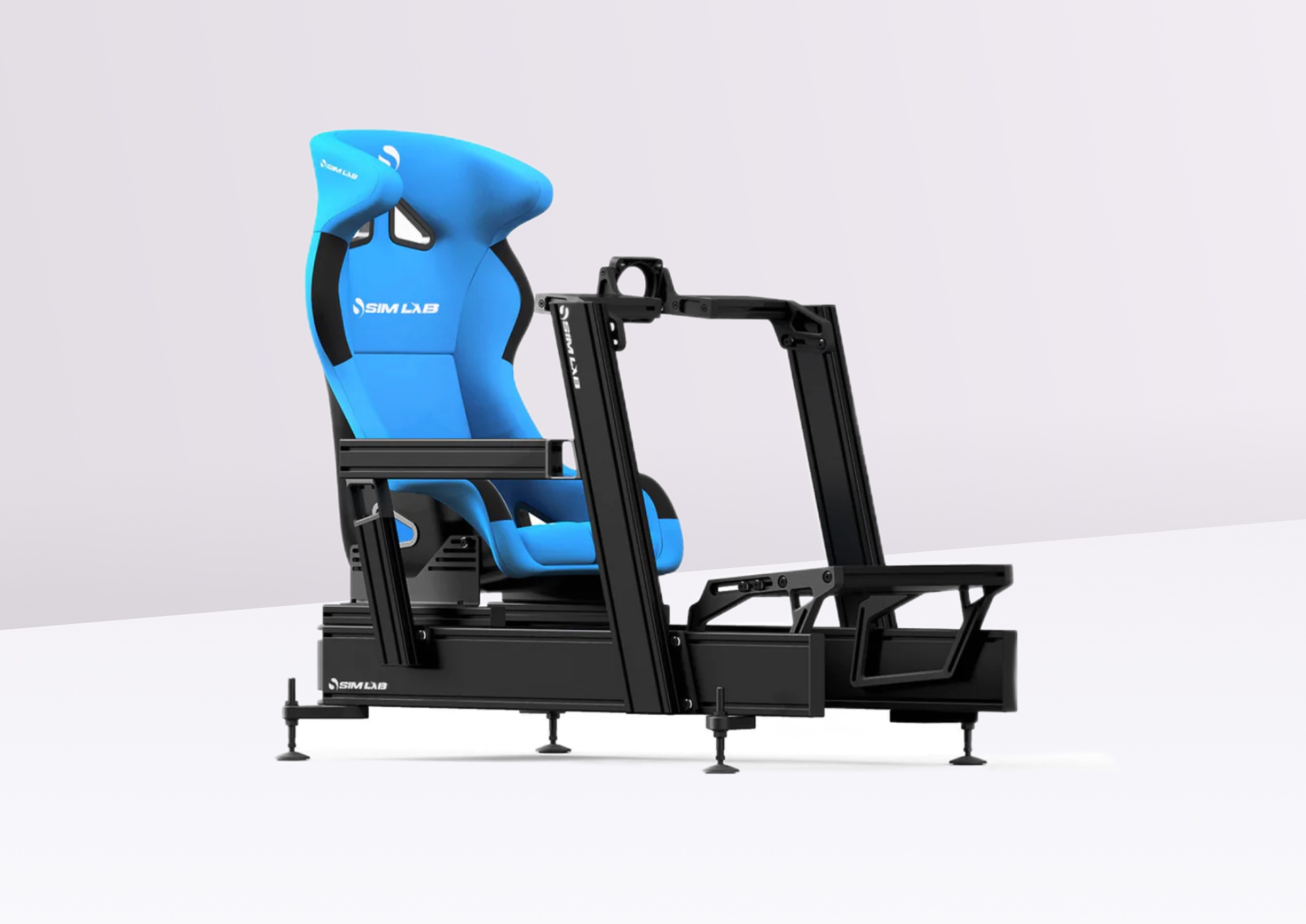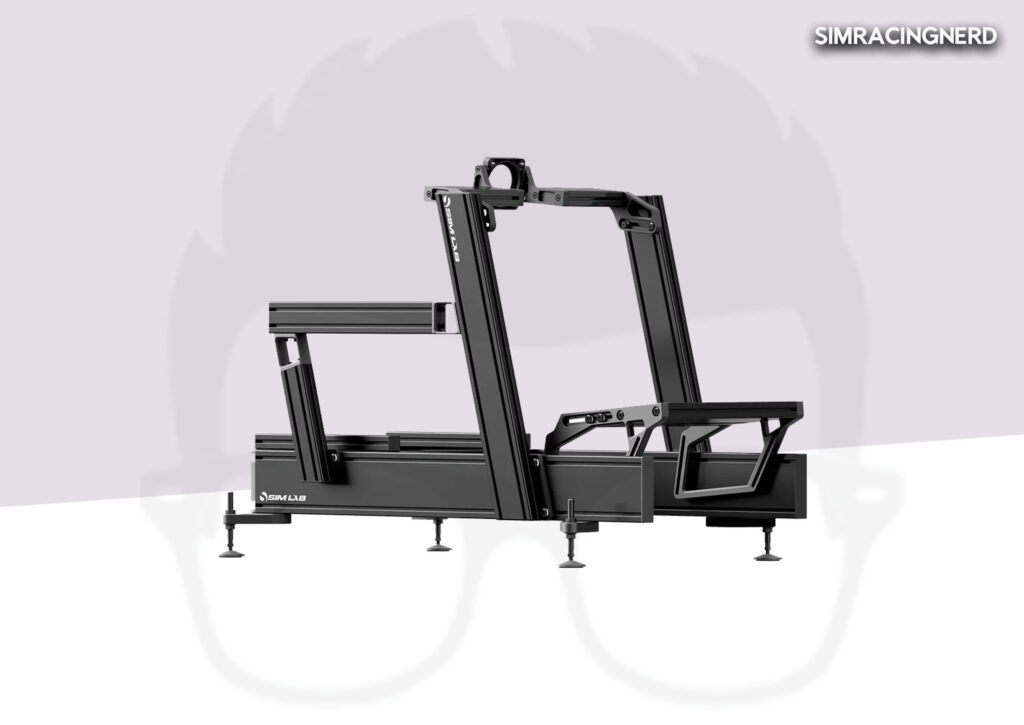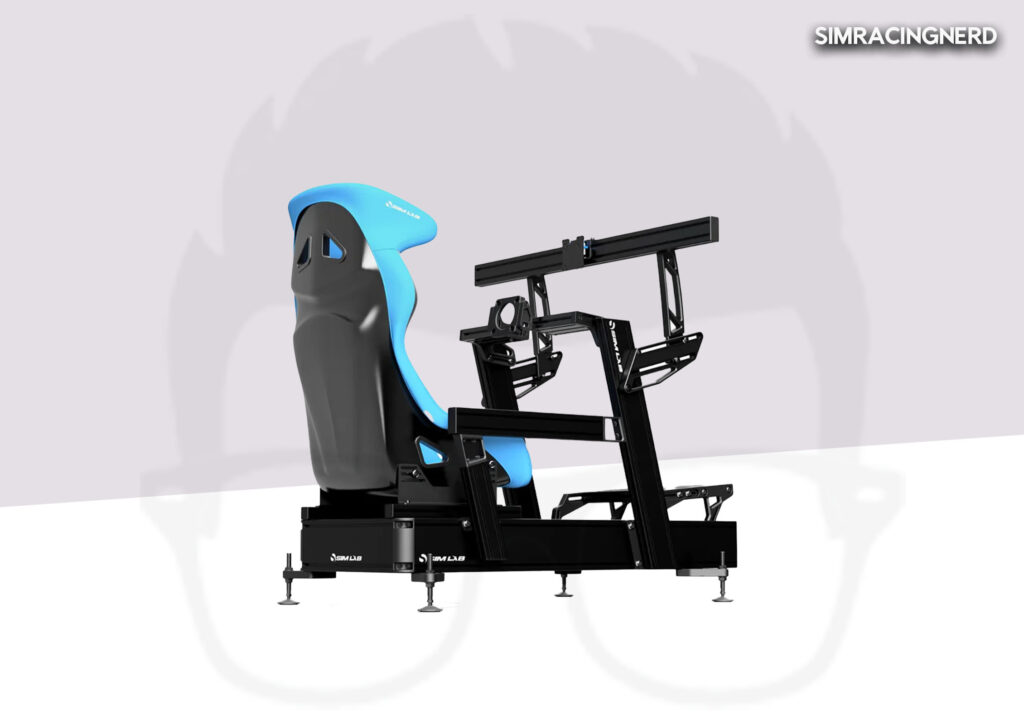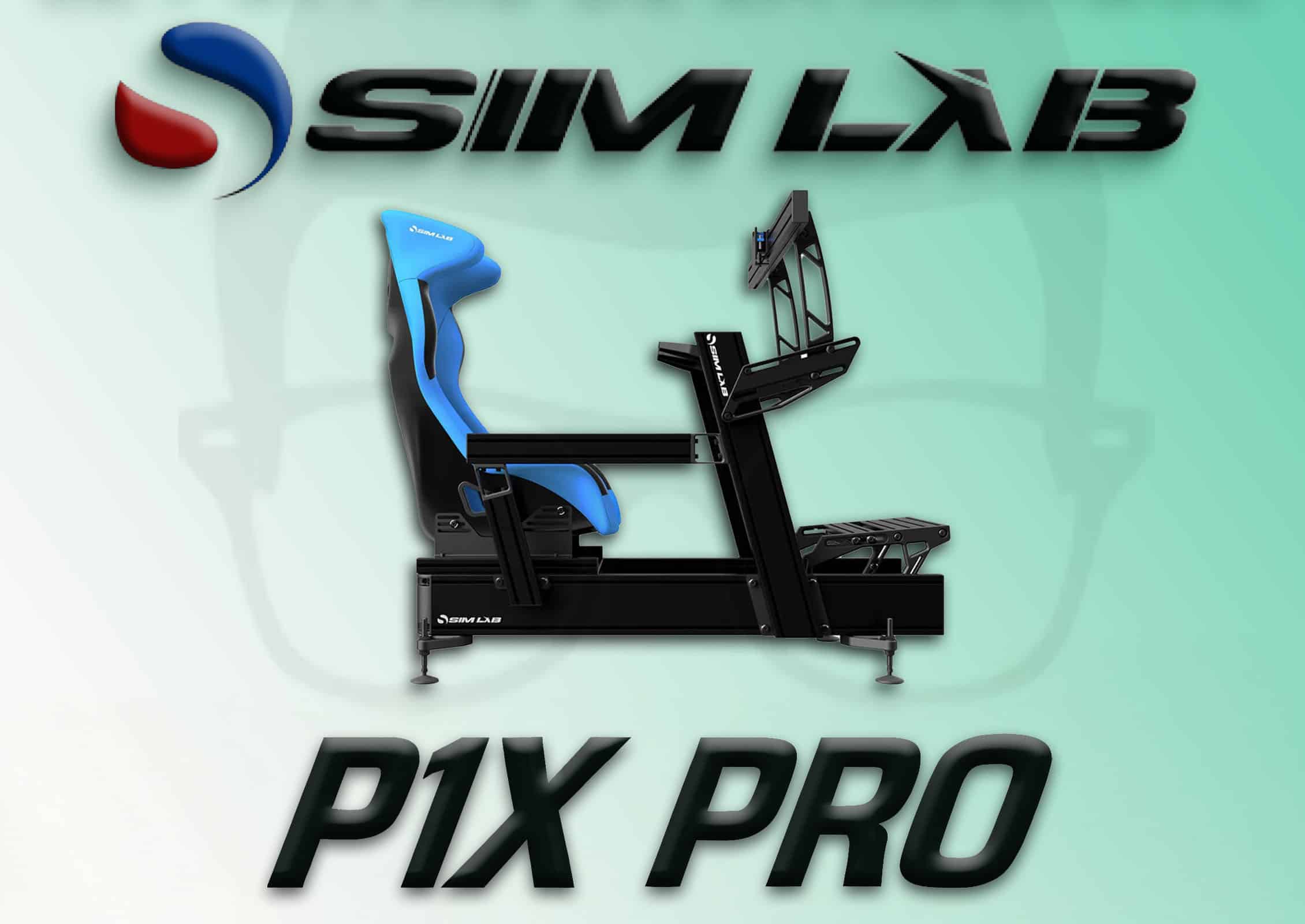Simlab P1X Pro in a nutshell

Advantages & Disadvantages
✅ Rigid, modular structure
✅ Excellent build quality
✅ Simple, unobtrusive design
❌ Very delicate paintwork when handled
❌ All accessories come at a price, and the bill quickly climbs for full options.
There are many manufacturers of sim-racing chassis on the market, with brands that have been around for over 20 years(Playseat, for example). Others were created later, and the most recent have been on the market for barely 10 years, as is the case with Simlab.
This Dutch manufacturer’s catalog pales in comparison with that of Playseat, for example. Simlab only offers 4 cockpit entrances, and they look pretty much the same, I must say. However, the difference lies mainly in price and modularity.
Simlab’s products are renowned for being affordable compared to the competition, as well as being highly modular, and this is thanks to the use of aluminum profile. In what follows, I’m going to introduce you to one of the brand’s top-of-the-range chassis, the P1X Pro. I’ll tell you about its strengths and weaknesses, and give you my opinion of it.
Main and technical cockpit features
- Entire structure in 40 mm aluminum section with different lengths
- Support for Direct Drive base with front mounting
- Highly modular chassis with various optional accessories (seat, supports, etc.)
- Dimensions: 1350 x 580 x 770 mm (L x W x H)
- Chassis delivered disassembled
- Supports adjustable to different angles
- Maximum pilot size 2 m
P1X Pro design
The design of the Simlab P1X Pro is quite minimalist, with black dominating the entire chassis. There are a few white brand logos positioned on brackets and structural parts, but it’s subtle. And I must admit, I love it. It’s a far cry from Playseat’s flashy options, and I’m sure many riders will agree.
You’ve got an aluminum profile baseplate that represents the foundation of the structure, to which are bolted various brackets for seat, crankset, base, monitor (optional) and shifter. All in all, the P1X Pro is a real all-rounder in sim-racing, allowing you to marry it with any setup.

Customize device mounting
On your right, you’ll find a support for a shifter and/or handbrake. The height of the bracket can be adjusted by means of slides, but its position, or rather its distance from the support for the chainstay, is fixed. You can move it forward or back if you wish.
Speaking of the latter, by default you have front-mounting for Direct Drive bases, and this will easily accommodate devices from Moza, Simagic, Simucube, Asetek and the list goes on. You also have two other base mounting options, which are a wheeldeck in the form of a plate with bottom mounting, and a system specific to Fanatec bases. You’ll need to select it when configuring the chassis to get the right elements. By the way, this base support is also adjustable.
As for the crankset, there’s a special bracket with numerous holes to accommodate virtually all the peripherals available on the market, whether Load Cell, standard or hydraulic.
Last but not least, the bucket is attached to a slide that allows the position of the bucket to be changed. All in all, the P1X Pro offers numerous options for mounting sim-racing peripherals.
Manufacturing and finishing
Simlab uses aluminum profiles for all its chassis, from entry-level models to the most expensive in its catalog. The P1X Pro is no exception to the rule, with profiles of varying lengths (up to 1.60 m for the basic structure).
It’s superbly made, and on all the parts. I didn’t notice any defects, burrs or parts that didn’t fit together properly. The overall finish is very good, but only on the chassis profiles. Admittedly, the P1X Pro is painted, but it looks like it’s been spray-painted. It’s not cooked, and you’ll get scratches if you’re not careful when assembling or using the chassis. Incidentally, this is the only major fault I can find with this cockpit.
Cockpit assembly
The P1X Pro is delivered in several boxes, completely disassembled. Assembling the cockpit will take some time, as it’s not a simple steering wheel support, and I’d advise you to have another pair of hands to help you.
The assembly manual is very easy to read, detailed, with all components labeled, as well as the necessary screws and bolts. But it’s not in paper format: it’s a QR Code that lets you view the document with a smartphone or computer.
The operation will take a few hours to complete, and you’ll need time afterwards to adjust the various cockpit components, such as the chainstay, shifter, crankset and bucket. As I said above, it’s easy to do, but it takes time. One weekend afternoon to assemble it, and the second to make the adjustments should be more than enough, I think.
Sensations during play
Let’s turn now to the Simlab P1X Pro. For sim-racing setups, you can put anything and everything in it, without worrying about sturdiness. This cockpit is designed to take the torque of a Fanatec Podium DD2.
As far as rigidity is concerned, the chassis feels like it weighs a ton; it doesn’t move at all during sim-racing sessions, even on angry titles like AC, ACC, iRacing and co. And yet, the P1X Pro rests on 4 little metal feet, but it doesn’t budge at all in the middle of a race, braking or anything else.
Speaking of braking, the bottom bracket may seem weak, but it easily supports 100 kg Load Cell. Personally, I didn’t feel any flex under my feet, although I’ve been told that the plate has a slight movement under heavy braking. In my opinion, it’s so subtle that it’s hard to feel it underfoot.
Simlab’s bucket seats offer excellent support during the race, especially for the back. You can feel the seat hugging you, just like in a race car. What’s more, the different position settings mean you’ll quickly find your feet on the track.
Let’s finish with the base support. Admittedly, it’s made up of several parts (except for the wheeldeck, which is a single piece), but the whole thing doesn’t budge, even when you’re driving hard. Frankly, this is one of the most rigid chassis on the market.

P1X Pro compatibility
The P1X Pro’s compatibility with sim-racing peripherals is both extensive and complete, whether for DD bases, pedals, buckets or shifters/handbrakes.
To cut a long story short: you’ve got more or less all the big names in the industry covered, provided you choose the right support for Direct Drive databases.
Value for money
In terms of value for money, I think the P1X Pro is right where it should be on the market. At €800 in standard configuration, i.e. without accessories, the P1X Pro does very well in terms of value for money. On the other hand, you’re going to have to stretch your wallet a bit if you want to do some sim-racing on it, especially with a bucket seat. In full option, i.e. with the Sparco Circuit II seat and 3-monitor mount, the P1X Pro will set you back nearly €1,700, and that’s still a lot of money.
My verdict on Sim-Lab’s P1X Pro chassis
In terms of build quality, modularity, sturdiness and looks, I can’t beat the P1X Pro. Yes, you’ll certainly find better-looking cockpits from other brands, with exceptional features (GT/F1 hybrid chassis, for example), but these options cost an arm and a leg.
As far as I’m concerned, the P1X Pro is an excellent chassis for anyone. It’s ultra-rigid to accommodate the biggest DD bases, it’s good-looking and modular too. If you can afford it, take it in configuration with Vario support for a monitor and a Simlab bucket for around €1,400.








0 Comments